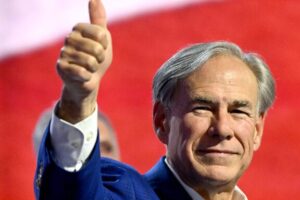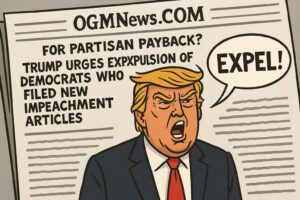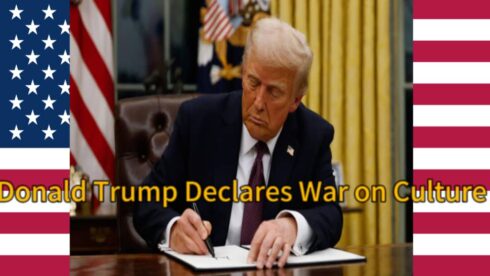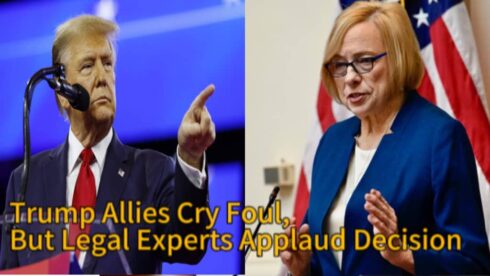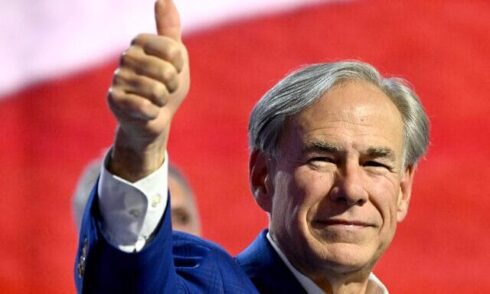Donald Trump has ignited a national firestorm by announcing his administration’s intention to defund the National Endowment for the Arts (NEA) and the National Endowment for the Humanities (NEH). During a rally in Texas, Trump asserted that “taxpayers should not be forced to subsidize institutions that promote woke ideology and anti-American narratives.” This declaration drew immediate backlash from cultural stakeholders across the country.
The proposed cuts mark the latest chapter in Trump’s ongoing battle against institutions he deems “elitist” and “left-leaning.” Critics argue that these endowments—responsible for funding museums, public broadcasting, libraries, and educational programs—are crucial to preserving the nation’s diverse cultural heritage. Yet Trump doubled down, saying, “We need to fund our borders, not obscure theater groups in Brooklyn.” His statement has ignited a national debate over the role of government in cultural development.
Impact on Educational and Rural Arts Programs
Donald Trump defended his plan by claiming that most federal arts funding benefits “liberal cities” and does little for “real Americans.” However, this assertion stands at odds with NEA and NEH data showing that a significant percentage of grants go to rural and underserved communities, where private funding is often unavailable. Educational institutions, particularly community colleges and K–12 schools, rely on these funds for arts education and historical preservation programs.
The proposed cuts could gut regional programs in states like Kentucky, Montana, and West Virginia, which have received millions in grants over the last decade. Teachers, local historians, and rural arts councils warn that the move would unravel decades of bipartisan work to democratize access to culture and history. “This isn’t just an attack on the arts—it’s an attack on education,” said a Tennessee high school principal who oversees an NEH-funded oral history project.
A Cultural Cold War: Trump vs. the Creative Class
Donald Trump’s combative rhetoric has once again positioned him as the adversary of the “creative elite,” accusing actors, artists, and historians of using federal money to “indoctrinate American youth.” He likened some federally funded art exhibits to “taxpayer-sponsored propaganda,” calling for a full audit of past grants and programs. The American creative community, in turn, has branded his proposal “cultural authoritarianism in disguise.”
In response, prominent authors, musicians, and filmmakers have mobilized against the policy. A joint open letter signed by over 1,000 cultural figures—including Pulitzer Prize winners and Grammy nominees—urges Congress to “reject this assault on American expression.” Trump, unfazed, called them “overpaid, under-talented snobs” during a follow-up interview with Fox News. The escalating conflict threatens to polarize public sentiment around cultural policy like never before.
Economic Ripple Effects Beyond the Stage and Page
Donald Trump claims the $300 million annual budget for the NEA and NEH is “wasteful spending,” but economists and arts advocates argue that the arts contribute over $1 trillion to the U.S. economy annually and support more than 5 million jobs. Defunding the endowments could trigger a domino effect—throttling smaller arts nonprofits, shuttering regional theaters, and laying off thousands in creative and administrative roles.
Cities like Minneapolis, New Orleans, and Portland, whose tourism industries rely heavily on local arts and culture, may see a dramatic decline in visitor spending. Moreover, public radio stations and small-town museums that depend on federal support could face extinction. As one arts economist noted, “This isn’t fiscal conservatism—it’s economic sabotage disguised as budget trimming.”
Partisan Firestorm on Capitol Hill
Donald Trump’s announcement has turned into a political litmus test for Republicans and Democrats alike. Far-right lawmakers have praised the move as a “reckoning for taxpayer accountability,” while moderate Republicans express concern over the social and economic implications. Democrats, meanwhile, have vowed to block any budget that includes arts defunding, framing the issue as one of national identity and freedom of expression.
Senator Elizabeth Warren called Trump’s plan “cultural vandalism,” while GOP Senator Susan Collins warned that such cuts “would severely impact education and heritage in my state of Maine.” The policy has already deepened fault lines within the Republican Party, pitting populists against traditional conservatives who value arts funding as a pillar of American soft power.
Trump’s Vision of National Identity Under Scrutiny
Donald Trump’s proposed cuts are not merely about finances—they reveal his broader vision of what America should value. By targeting the arts and humanities, Trump signals a preference for a nationalist, utilitarian government stripped of intellectual and artistic inquiry. Critics say this vision echoes global authoritarian trends where regimes silence dissent by gutting cultural funding.
This moment is more than a budgetary debate—it’s an existential question about America’s soul. Will the U.S. continue to fund its storytellers, historians, and educators, or will it succumb to political agendas that favor control over creativity? As Trump’s policy vision unfolds, the answer may determine not only the future of federal arts funding but also the fate of America’s cultural conscience.



